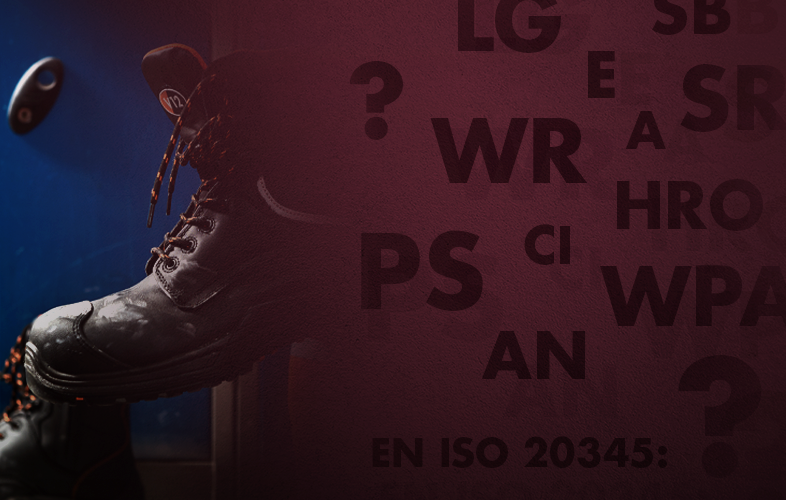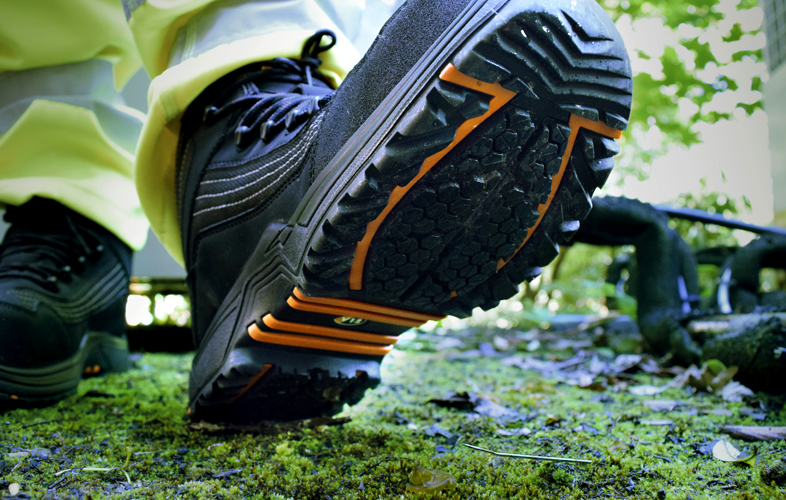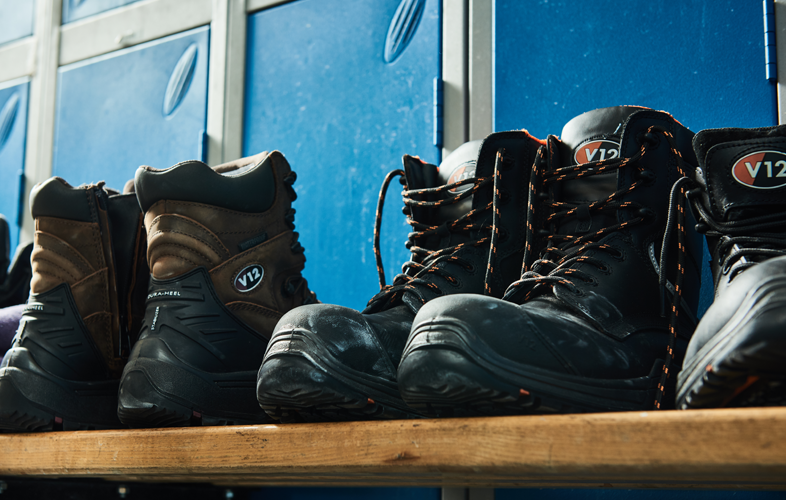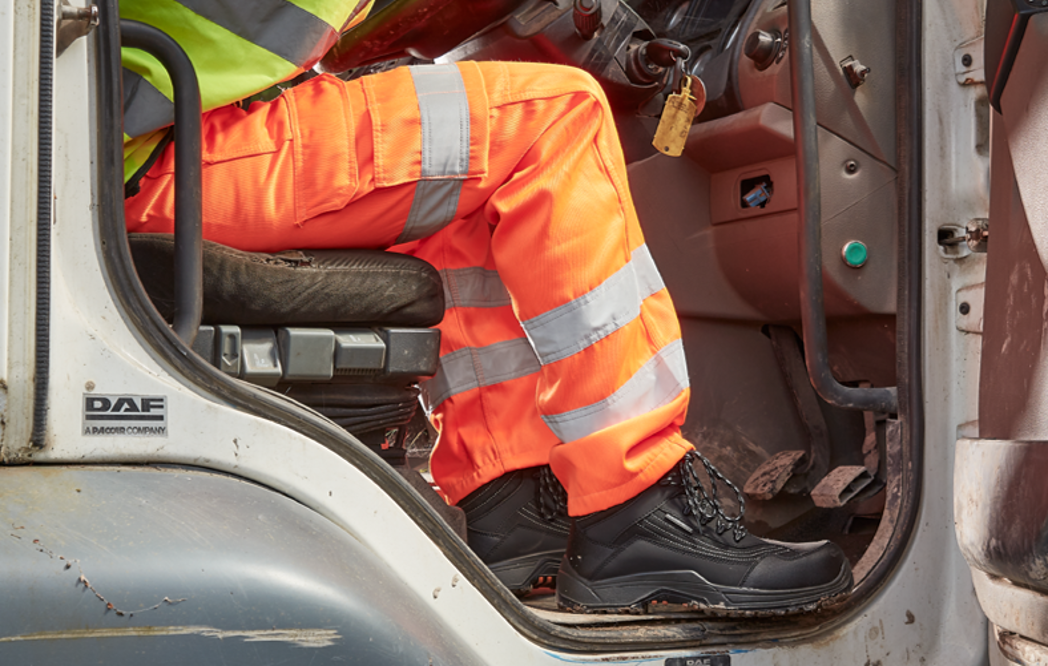Getting the right specification of safety footwear for a workforce is crucial in reducing or preventing injuries. It is the employer's legal duty to ensure staff are sufficiently protected by knowing how the hazards of the work environment can be combated by the right safety boot features.
But with so many types of safety footwear available, and so many safety codes and markings that fall within the EN ISO 20345 safety footwear standards, things can quickly get overwhelming. What's the difference between S1 and S3 safety boots? What does the L mean in SL3? Does my workforce need an S1 boot or an S7 boot, or something in between?
Don’t worry - in this blog, we’re clearing up the confusion by giving you a clear and simple guide on the different safety specifications and additional features a boot can have, how you identify these, and we’ll also show you how V12 Footwear can help you decide which boot specification your workforce need so their safety is maximised.
I’m in charge of PPE procurement & Health and Safety – how do I know I'm getting the right boot for my workforce?
The first thing to ensure when protecting your workforce is that you know the safety footwear standards. When you consider all of the workplace risks that your company’s employees face from their role and environment, having full knowledge of the safety standards will guide you to procure the boot with the appropriate safety specification or ‘spec.’
And knowing the current standards is particularly important now they’ve changed.
The EN ISO 20345:2011 safety footwear standards have undergone several updates in terms of classification, testing and codes. These changes are reflected in the new EN ISO 2345:2022 safety footwear standards. Want more information on the EN ISO 20345:2022 updates? Read our whitepaper on all the safety footwear standard changes here.
New footwear coming through will be tested to the new standards, so below we've broken down this classification for you.
EN IS0 20345:2022 SAFETY FOOTWEAR STANDARDS - CLASSIFICATION TABLE
.png?width=720&height=1058&name=MicrosoftTeams-image%20(16).png)
ADDITIONAL PROTECTIVE FEATURES
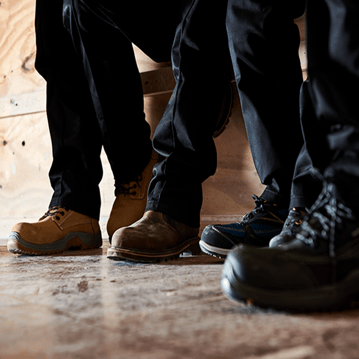 As well as these standards, safety footwear can carry additional protective features to meet more specific demands. These include:
As well as these standards, safety footwear can carry additional protective features to meet more specific demands. These include:
- Ankle protection (AN)
- Insulation against cold surfaces (CR)
- Cut resistance in the upper (CR)
- Resistance to fuel oil (FO)
- Heat-resistant outsole (HRO)
- Ladder grips (LG)
- Metatarsal protection (M)
- Protection from scuff-cap abrasion (SC)
Other additional safety features include insulation against heat (HI), additional slip resistance (SR) and there's also a symbol for footwear that can't undergo any slip testing due to having a studded or spiked sole. (Ø)
WHY THE RIGHT SPEC IS SO IMPORTANT
SAFETY
As you can see, a safety boot can carry multiple protective features that carry out a variety of safety functions, all preventing and reducing hazards in their own way – and it's the job of those in charge of Health and Safety and Procurement to make sure they fully understand the safety footwear classifications and the above additional safety features to ensure the workforce is protected.
This is particularly important because sadly, injuries in UK workplaces are still staggeringly high.
- 441,000 workers sustained a non-fatal injury according to the Labour Force Survey in 2020/21
- 33% of all non-fatal accidents in UK workplaces last year were slips, trips and falls
- Foot-related disorders affecting knees, hips and the back account for 8.8 million sick days taken each year.
These figures remind us that the workplace is still an extremely dangerous place. And it makes you wonder – how many of those slips, falls from height, foot disorders and non-fatal injuries were due to the wrong spec of footwear, or complete safety footwear non-compliance?
THE VALUE OF THE RIGHT SPEC
-1.png?width=347&height=347&name=EOM%20B2B-04%20(1)-1.png) It’s natural for a conscientious PPE procurer to want the best spec for their staff, but it’s just as problematic to over spec as it is to under spec for safety footwear.
It’s natural for a conscientious PPE procurer to want the best spec for their staff, but it’s just as problematic to over spec as it is to under spec for safety footwear.
It can negatively impact comfort. If your team work in a warehouse, they aren’t going to need a waterproof met boot with chunky outdoor grip. The added weight of the grip and met guard would reduce comfort unnecessarily, and the waterproof lining would make the boot (however good the membrane was) less breathable.
It can lead to overspend. Safety footwear with a high level of spec tends to come with a higher price tag. So, matching the requirements exactly to the safety specifications means you hit the sweet spot of offering full protection, but not overspending.
And knowing these standards will then allow you to start mapping out a pathway to the right safety footwear specification. For example:
- If you were obtaining safety footwear for a milling or lathing team, as it’s in a factory, you might look at an S1 boot as you’d need toecap protection and some level of grip, but not water-resistance.
- However, in a factory where sharp objects could be lying around and could penetrate the underfoot, you’d want to go to up to an S3 boot to get midsole protection. Would you move further up to a higher standard like S7? With no need for full waterproofing, probably not.
- Finally, in a factory where milling and lathing take place, sharp swarf can easily get caught up in and cut the ankles or Achilles of unprotected workers, so a cut-resistant upper (CR) might be an appropriate addition to your boot’s specification.
Assessing the Specific Safety Hazards in Your Workplace
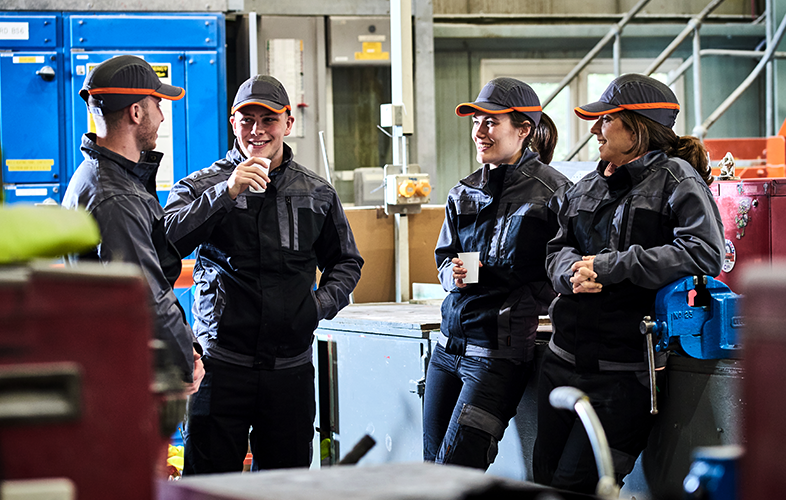
Before selecting the right safety boots for your team, it is essential to assess the safety hazards present in your workplace. But getting a full overview of the risks in your work environment is a big and challenging task. Firstly, your workplace could have several departments, all requiring a different safety footwear specification as their roles and therefore risks might differ.
Secondly, how well do you really know the risks that the workers on the ground in your company are facing? If you need guidance, the V12 Foot Health and Safety Assessment can help.
THE V12 FOOT HEALTH AND SAFETY ASSESSMENT
To help give you and your team the safety boot solution you need, we offer a three-part product suitability assessment where we work with you to establish the right safety footwear for your workplace. It features:
- an industry-leading audit of your work environment
- a multi-step safety footwear trial process
- our expert safety footwear recommendation
This foot health and safety process has had huge benefits for the companies who’ve signed up to it, including bringing in 100% compliance through improved fit, increasing morale and most importantly, giving employees the right protection with the right spec.
If you’d like to learn more about V12 Footwear’s Foot Health and Safety Assessment and how we can share our knowledge and safety expertise with you, click below.

